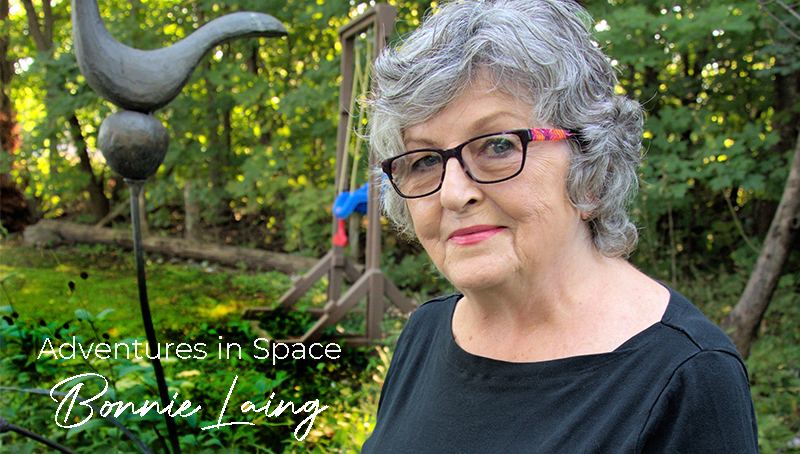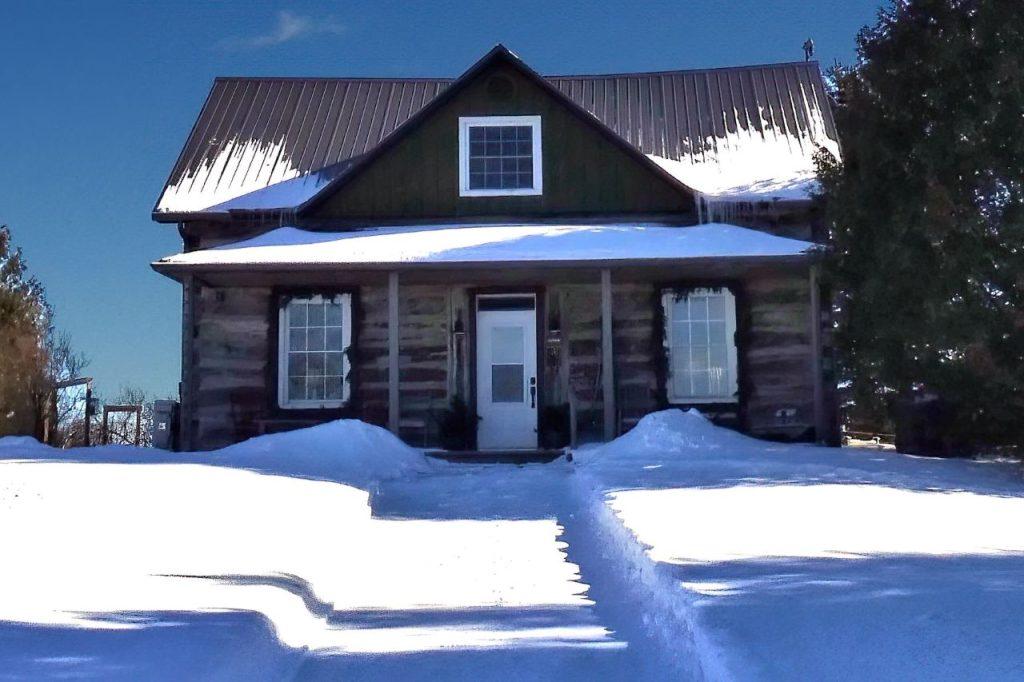 “The past is a foreign country. They do things differently there,” wrote author L.P. Hartley. And that’s the challenge that anyone buying a heritage house has: How do you deal with the way things were done ‘differently’?
“The past is a foreign country. They do things differently there,” wrote author L.P. Hartley. And that’s the challenge that anyone buying a heritage house has: How do you deal with the way things were done ‘differently’?
Artist Lis Skelly and writer/historian Karen Molson took up that challenge in 2010 when they bought a 150-year-old log house on 16 acres of land.
“It was a warren of tiny rooms,” Molson recalls.
They tore down walls to create an open living/dining room and turned a pass-through to the kitchen into a doorway. Because log houses have a tendency to be dark, they added a window in the kitchen and put in sliding glass doors to a deck they had built.
“I love old houses – they have soul,” says historian Molson, pointing out the name and date that Charlie McLennan, son of the original owners, carved on the floor of one of the bedrooms in 1864.
The result of the couple’s renovations is a bright, cosy home filled with art, books and antiques. In the dining area is a worn Turk’s Head sculpture that dates back to the 1700s and the Turk’s Head Coffee House in London.
“Legend has it that the Turk’s Head was Samuel Johnson’s favourite coffee house,” Skelly relates, of the gift from animator Grant Munro – a friend she met while working at the National Film Board in the 1970s.
In the sunroom is an Indian antique chess set, once owned by National Film Board (NFB) Oscar-winning filmmaker Norman McLaren.
The house also features family treasures from the owners’ own past. In the library is a portrait of one of Molson’s ancestors, John Thomas Molson as a young man, painted in the early 1800s. In Skelly’s studio is a portrait she painted of her late father.
The couple’s creativity shines throughout the property. When the penny was decommissioned from Canadian currency in 2012, Skelly gathered all the pennies she could find and enlisted friends to do the same, so she could create the copper backsplash that is a highlight in the kitchen.
“I glued them on first, then grouted them,” she explains, creating a unique tiling effect.
Living in a log house, it seemed natural for Molson – who also hooks rugs – to stitch a log cabin quilt for one of the bedrooms. The couple’s flair for design has extended outside, where a derelict barn stood. They had it demolished but kept the stone foundation, creating a south-facing walled garden that overflows with flowers and vegetables in the summer. An existing orchard provides them with fruit and a small artificial stream provides the soothing sound of running water.
On the property’s woodlot, Skelly and Molson have carved trails, where they walk their dogs, Seamus and Sadie. They also seem to have carved out an ideal life from the pioneer past.
Log Homes In Practice
• While first growth logs provide great insulation, the chinking might need repairs over the years.
• Log houses seem to attract cluster flies and beetles, which may require professional spraying.
• In severe cold, the logs may be heard cracking.
• An airtight woodstove or fireplace is an essential source of heat.
This feature is part of a monthly series of articles The Review is publishing about local people who have done amazing things to their homes, gardens or workplaces. If you know of someone we might feature, please send us an email to: [email protected]

The log house Lis Skelly and Karen Molson bought in 2010. Photo: Bonnie Laing

Karen Molson in front of a portrait of her ancestor John Thomas Molson as a young man. Photos: Bonnie Laing

Lis Skelly in front of the kitchen backsplash which she made with Canadian pennies. Photo: Bonnie Laing


